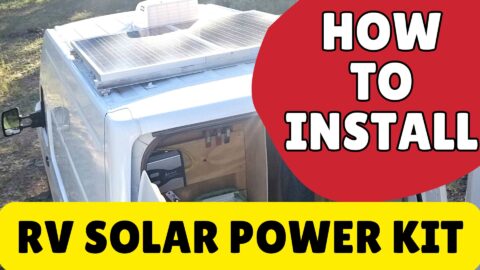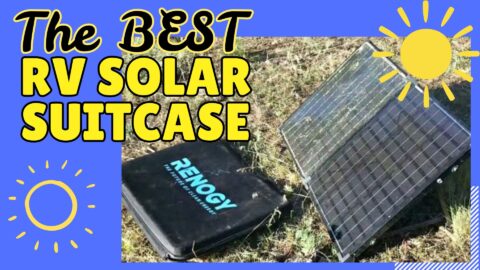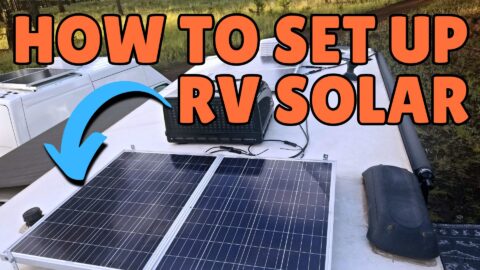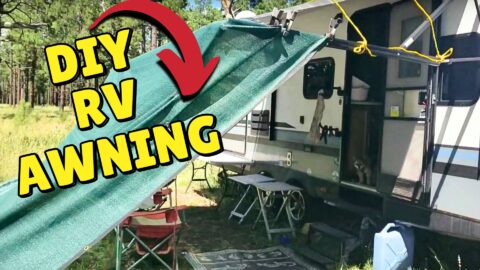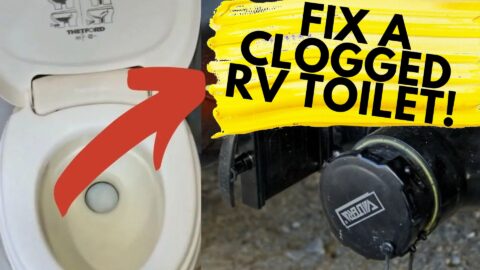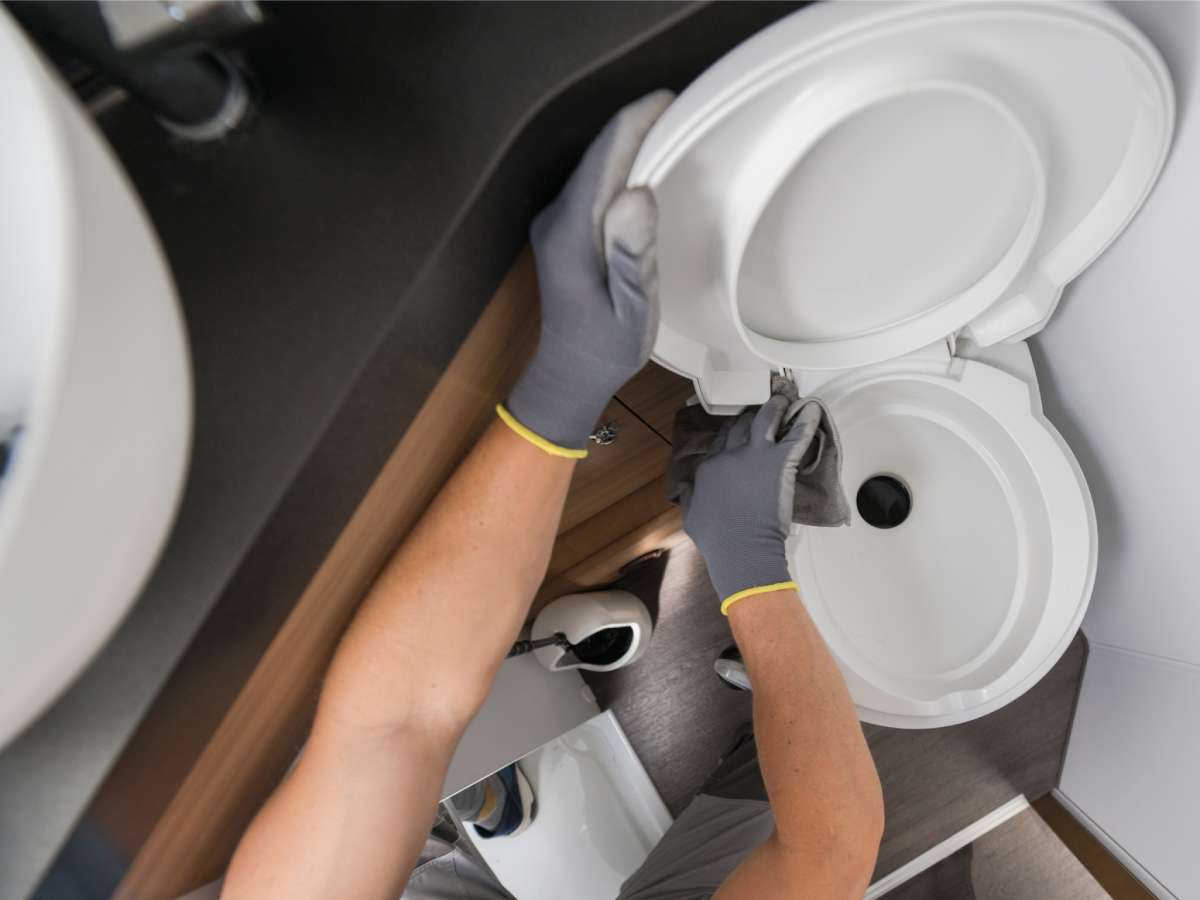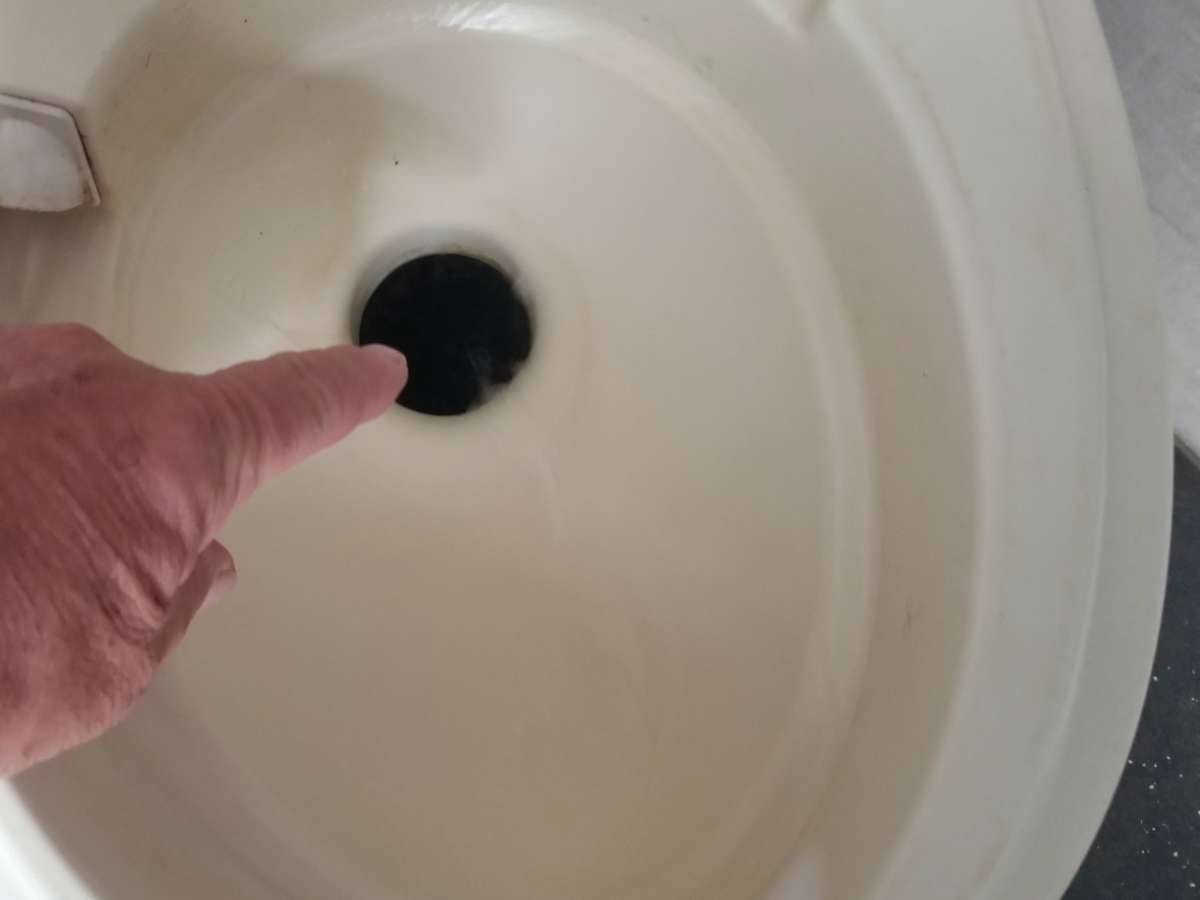RV Solar System Setup: How To Do A Series Parallel Configuration
See how I’m using a Series Parallel System with different sized batteries to charge the solar panel arrays on my RV.
A Series-Parallel connection is typically used when other options are not available to meet your needs!
(Don’t miss the “related article” with additional tips to help you set up your RV solar power system!)
============================
TRANSCRIPT:
Hi, I’m Curtis with The Fun Times Guide. Today, I’m going to show you a more elaborate solar system that had to be tailored to meet some specific needs. This will be a series parallel system which will combine a total of 400 watts of solar, charging two separate battery banks.
On the roof we have 2 separate arrays — each with 200 watts hooked together in parallel. Then, the 2 separate arrays are combined (in series), creating a total of 400 watts being able to go down the 10-gauge wire you see headed to the corner of the awning.
The wiring from the solar panels comes down inside the awning rail and goes through a neat junction box into the side compartment of the RV. Inside the side compartment you will see that there are 2 charge controllers mounted on the wall. And this is 1 of 3 batteries that are hooked together with a 2,500-watt inverter hooked into the system as well.
One of the charge controllers charges these 3 batteries in the storage compartment. The other charge controller comes through and provides the charging power for the original equipment batteries on the tongue of the trailer.
The advantage of this series parallel system is that you can charge multiple batteries of different sizes and different types and still maintain maximum efficiency and longevity from your batteries. In this particular case it was just more convenient to leave the 2 smaller batteries to operate the standard equipment electrical devices within the trailer. And then for my special electronics (since I prefer to have a few luxury items such a satellite TV and I use my computer regularly), it was better to install a second battery bank of larger batteries (larger capacity for storage). And I still want to be able to use the 10-gauge wiring. So by increasing the voltage and keeping the amperage within the limitations of the wiring, I was able to satisfy the needs of both separate battery banks — making the best use of everything.
I hope you find something useful in this bit of information. And we’ll see you next time!

